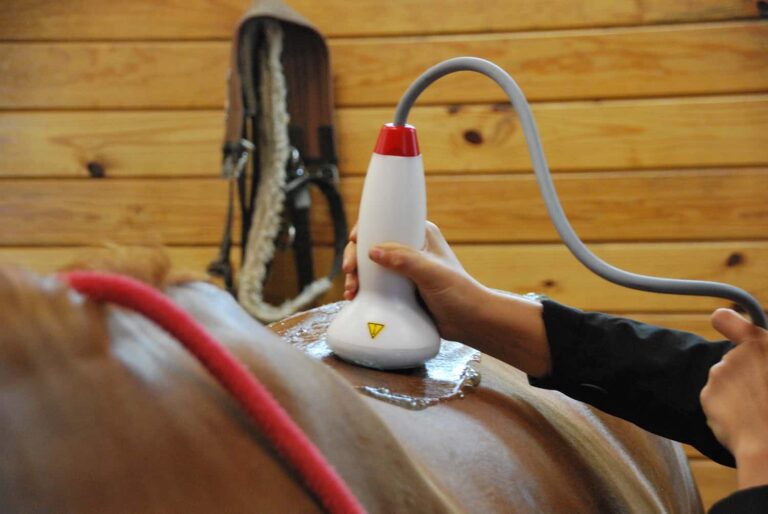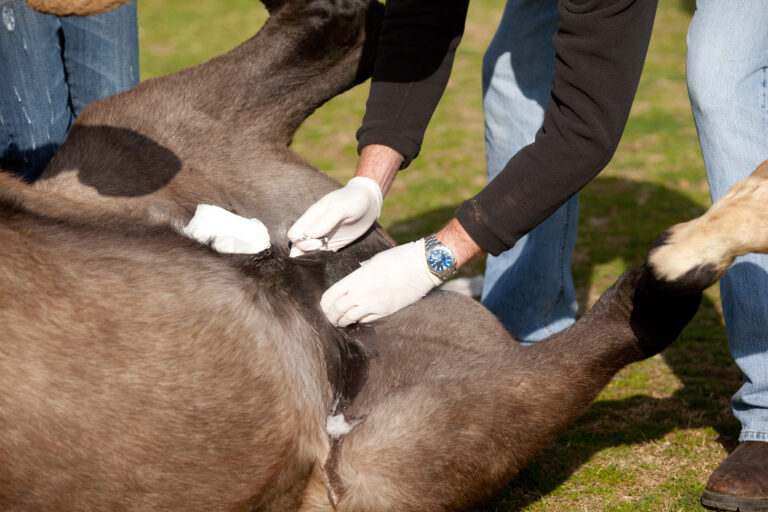A research team based in the University of Georgia College of Veterinary Medicine has discovered a novel gene—erm(46)—that confers antibiotic resistance in Rhodococcus equi, a soil-dwelling bacterium that commonly infects foals and causes opportunistic infections in immunocompromised people. The finding was made in collaboration with researchers at the University of Edinburgh, Texas A&M University and the University of Washington.
Rhodococcus equi, a Gram-positive intracellular pathogen, is one of the most important causes of disease in foals between 3 weeks and 5 months of age, said team lead Dr. Steeve Giguère, the Marguerite Thomas Hodgson Chair of Equine Studies at UGA and a board-certified large animal internal medicine specialist.
The researchers sequenced the genomes of antibiotic-resistant and antibiotic-susceptible R. equi isolates collected from foals in four states. They searched each isolate’s genome for genes with similar sequences to known genes that cause bacterial resistance to the macrolide class of antibiotics in other bacterial species. Through their search, they discovered the new gene, named erm(46) by the Nomenclature Center for MLS Genes at the University of Washington.
When the team cloned erm(46) into susceptible R. equi isolates normally inhibited by antibiotics, they found that erm(46) induced a high level of resistance to macrolide, lincosamide and streptogramin B antibiotics. They also found that the gene can be transferred from resistant to susceptible isolates of R. equi during bacterial mating.
“This process likely contributes to the spread of resistance,” Giguère said.
Their finding, recently published in the Journal of Antimicrobial Chemotherapy, is the first molecular characterization of resistance to these three classes of antibiotics in R. equi.
“Before, we knew we had resistant isolates, but we did not know how resistance occurred, and we had no molecular markers to identify and track the resistant bacteria,” Giguère said.
So far, Giguère and his team have identified antibiotic-resistant R. equi isolates carrying erm(46) in New York, Florida, Texas and Kentucky–where, on one farm producing 100 to 170 foals a year, as many of 40% of infected foals were found to carry resistant isolates.
The bacterium is present in soil year-round, but because it typically causes disease only in foals up to 5 or 6 months of age, illnesses typically manifest in spring and summer.
“It is believed that most foals become infected through inhalation of R. equi within the first few weeks of life, and they start showing clinical signs of pneumonia between 3 weeks and 5 or 6 months of age,” said Giguère.
People may come into contact with R. equi on farms, while gardening or during other activities that disturb dirt; however, it typically only causes infection in immunocompromised individuals.
Not all R. equi causes disease in foals. A piece of DNA located outside the chromosome, called a plasmid, is responsible for making R. equi virulent in foals. Variations on this plasmid can be found in pigs and also cattle.
The spread of drug-resistant R. equi may be a growing problem, Giguère said. “It’s something that was unheard of 15 years ago, and now we’ve found it in multiple states. We need to conduct a well-designed epidemiological study to really know the prevalence of resistant isolates across the country.”
The team’s study on “Novel transferable erm(46) determinant responsible for emerging macrolide resistance in Rhodococcus equi” is available at https://jac.oxfordjournals.org/content/early/2015/09/15/jac.dkv279.full.
Study co-authors include Londa J. Berghaus, Mary K. Hondalus and Jennifer M. Willingham-Lane, UGA College of Veterinary Medicine; Elisa Anastasi, Jose A. Vasquez-Boland and Iain MacArthur, University of Edinburgh; Noah D. Cohen, Texas A&M University; and Marilyn C. Roberts, University of Washington.
Their work was funded by the Morris Animal Foundation, the largest private funder of companion animal research.
UGA College of Veterinary Medicine
The UGA College of Veterinary Medicine, founded in 1946, is dedicated to training future veterinarians, conducting research related to animal and human diseases and providing veterinary services for animals and their owners. Research efforts are aimed at enhancing the quality of life for animals and people, improving the productivity of poultry and livestock and preserving a healthy interface between wildlife and people in the environment they share. The college enrolls 114 students each fall out of more than 1,100 who apply. For more information, see www.vet.uga.edu.




